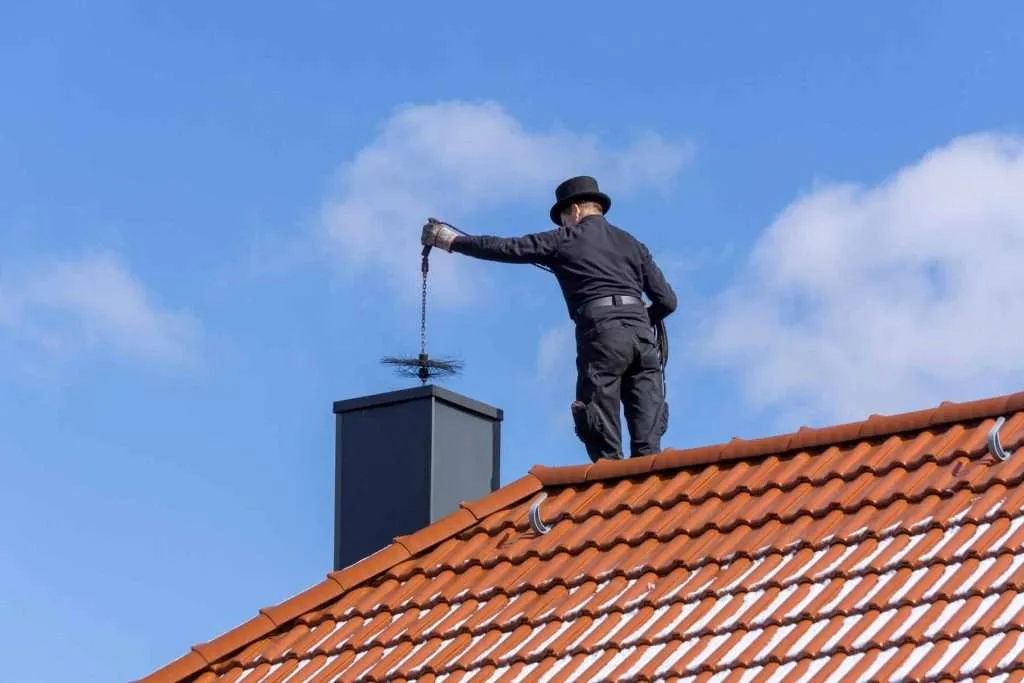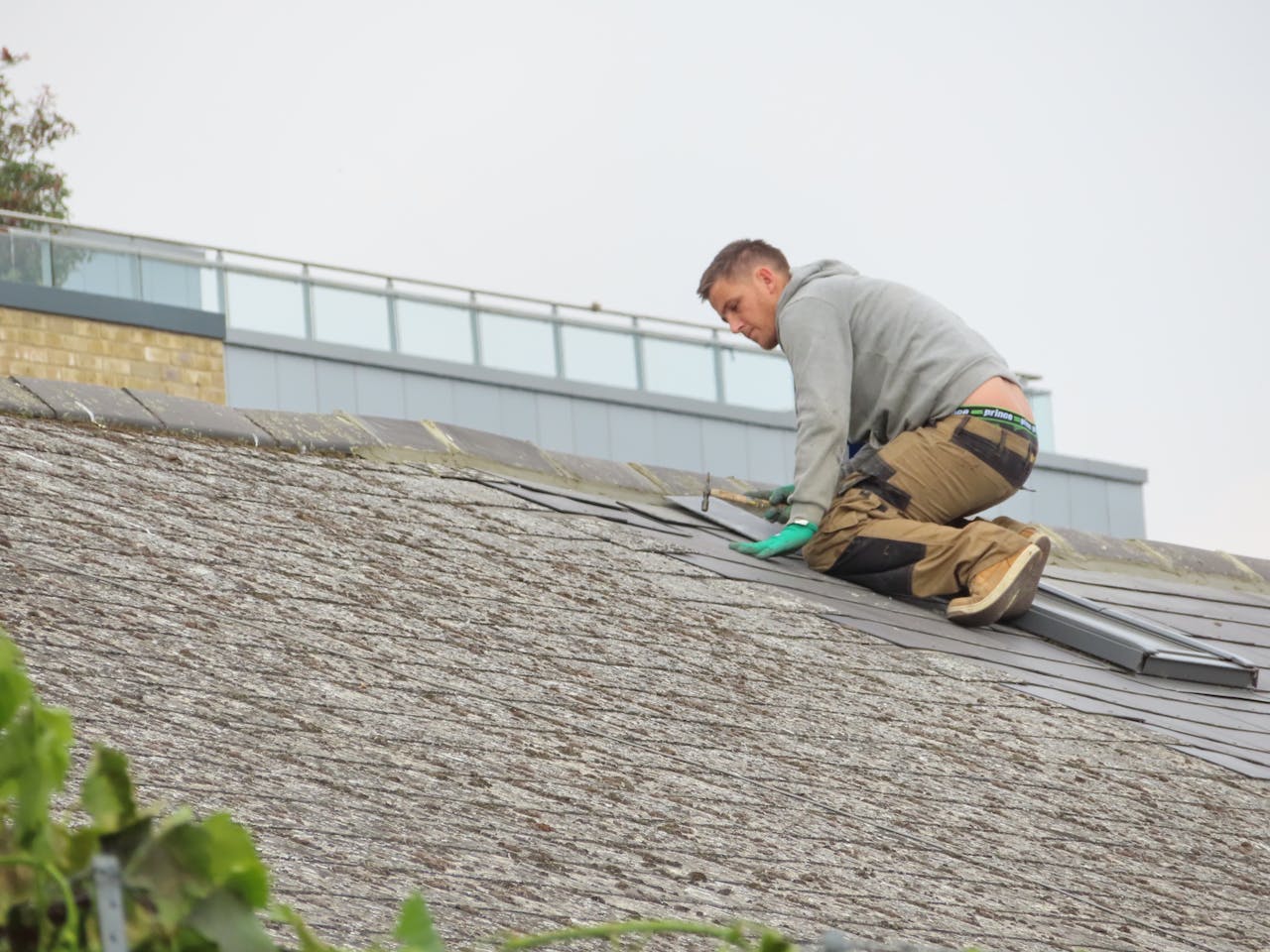Why Follow A Seasonal Chimney Maintenance Schedule?
Chimneys aren't "set it and forget it" systems. They change with the weather just like we do - expanding in summer heat, weathering nor'easters, and working overtime during our famous NewEngland winters. A proper seasonal chimney maintenance schedule prevents:
- Costly emergency repairs that often stem from small issues left unaddressed through multiple seasons
- Dangerous creosote buildup that becomes harder to remove the longer it sits and can ignite at temperatures as low as 200°F
- Animal invasions (Massachusetts squirrels love chimneys as much as they love your bird feeders), especially in spring when creatures seek warm nesting spots
- Water damage from our heavy rains and snowmelt that can silently erode mortar joints and rust metal components
At Dave's Chimney Service, we've been helping Massachusetts homeowners stick to this routine for over 20years. Now we're sharing our insider knowledge so you can stay ahead of problems before they start.
Spring: The Clean-up Season (March-May)
When that last winter fire dies down and the crocuses start popping up, it's time for spring chimney care. This is the most important season in your seasonal chimney maintenance schedule because it sets you up for success all year.
What to Do:
- Schedule your professional cleaning
- All that wood you burned left behind creosote that hardened over winter into a glazed, flammable layer that's difficult to remove without professional tools
- Professionals have special rotary whips and industrial vacuums that reach areas homeowners can't, while containing the soot mess
- Bonus: Spring appointments are easier to get than fall rush when everyone remembers their chimney at the same time
- Check for winter damage
- Look for cracked bricks or missing mortar (freeze-thaw cycles are brutal) by examining the exterior with binoculars for spalling or gaps
- Inspect the chimney crown for hairline cracks where water can enter and expand during summer storms
- Check flashing around the chimney base for lifted edges that developed during winter's temperature swings
- Animal proofing
- Birds start nesting in April - install or check your chimney cap's mesh screening for holes larger than ¾ inch
- Listen for scratching sounds - animals love our chimneys after winter and may have already moved in during early spring
Pro Tip: The damp salt air on the Cape accelerates rust. If you're near the coast, pay extra attention to metal components like caps and dampers for reddish discoloration or pitting.
Summer: The Inspection Season (June-August)
While you're enjoying beach days and backyard barbecues, your chimney needs some love too. Summer is ideal for inspections in our seasonal chimney maintenance schedule because:
- No urgency means thorough inspections without technicians rushing to next appointment
- Dry weather allows for masonry repairs that need several dry days to properly cure
- You'll beat the fall rush when 60% of annual service calls happen in October alone
What to Do:
- Full professional inspection
- Level 2 inspection with camera scanning reveals hidden cracks in flue tiles that simple flashlights can't detect
- Check for hidden water damage from spring rains by examining the attic space around the chimney
- Assess liner condition for thinning areas or deterioration that could allow heat transfer to combustible materials
- Tackle repairs
- Masonry repointing lasts longer in warm, dry weather when new mortar can properly set without freeze damage
- Replace damaged flashing now to prevent autumn leaks when driving rains return to New England
- Waterproof exterior bricks with breathable sealant (but never the smoke chamber where heat could trap vapors). For a deeper dive, check out our guide on chimney waterproofing techniques.
- Prep for off-season
- Close the damper to keep out humid air that accelerates metal corrosion and creates musty odors
- Place moisture absorber in fireplace to prevent that characteristic "closed-up house" smell from developing over humid months
Fun Fact: That white powder (efflorescence) on your bricks? It's salt deposits from evaporated water - a sure sign moisture is getting in and needs addressing before winter freeze-thaw cycles begin.

Weekly newsletter
No spam. Just the latest releases and tips, interesting articles, and exclusive interviews in your inbox every week.
Fall: The Preparation Season (September-November)
As pumpkin spice everything takes over, your chimney needs attention before heating season begins. This is when our seasonal chimney maintenance schedule shifts to readiness.
What to Do:
- Final cleaning & inspection
- Test all systems
- Open/close damper multiple times to ensure smooth operation
- Light a small test fire to check for proper drafting before you really need it
- Stock up smartly
- Store firewood properly off the ground and covered (but with sides open for airflow)
- Keep kindling dry in a metal container away from the fireplace to prevent accidental ignition
Winter: The Monitoring Season (December-February)
When the snow starts falling in Worcester and the Patriots are on TV, your chimney needs vigilant care. This part of the seasonal chimney maintenance schedule is about safe operation. Following proper chimney maintenance best practices ensures your fireplace runs efficiently and safely during freezing temperatures.
What to Do Weekly:
- Check for creosote glaze (shiny, tar-like deposits) using a flashlight to examine the first few inches of flue visible from fireplace
- Remove ashes once they're completely cold (metal can with tight lid only) to prevent accidental reignition and maintain proper airflow
- Look for smoke backing up into room which indicates drafting issues possibly from exterior blockage or negative air pressure
After Heavy Weather:
- Check for snow/ice blockage at the top using binoculars to spot accumulated snow covering the flue opening
- Inspect for water leaks after freeze-thaw cycles that may have opened new cracks in the masonry
- Watch for new cracks in exterior masonry that could indicate frost damage from moisture freezing in pores
Safety Note: That"cozy" smell after a snowstorm? Often means your chimney isn't drafting properly due to temperature inversion - have it checked immediately as this can lead to dangerous carbon monoxide backup.
Year-Round Quick Checks
Some things don't fit neatly intoseasons but matter every month:
- Carbon monoxide detectors (test monthly) should be placed on each floor and near sleeping areas
- Fire extinguisher pressure gauge should show "full" and be accessible within seconds of the fireplace
- Cap condition (look up with binoculars) checking for rusted screens or missing rivets that developed since last inspection
When to Call the Pros
Even with the perfect seasonal chimney maintenance schedule, some jobs need experts:
- Any sign of chimney fire (puffy creosote, warped metal) which often leaves hidden damage requiring camera inspection
- Water leaking into fireplace suggesting crown or flashing failure that needs professional repair
- Damper won't open/close completely indicating mechanical issues or warping from heat exposure
- Strange odors or smoke backup that persists after basic troubleshooting attempts
Dave's Chimney Service handles these exact issues every day across Massachusetts. Our local experience means we know how to solve problems specific to New England homes, from Cape Cod's salt air to the Berkshires' deep freezes.
Final Thoughts
Like raking leaves or winterizing boats, chimney care follows nature's rhythm here in Massachusetts. Follow this seasonal chimney maintenance schedule and you'll:
- Avoid 90% of common chimney problems by catching them early in their development cycle
- Catch small issues before they become expensive like $15,000+ structural rebuilds from neglected water damage
- Keep your family safe all year from invisible threats like CO leaks or chimney fires that start behind walls
- Enjoy the perfect fire whenever you want without last-minute service calls during peak season
Now that you know what to do and when to do it, you're ready for every season. And if you ever need backup, our team at Dave's Chimney Service knows Massachusetts chimneys better than anyone. Here's to many cozy, worry-free winters ahead!











.png)
.png)